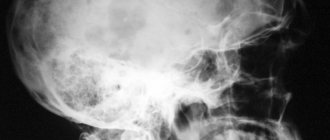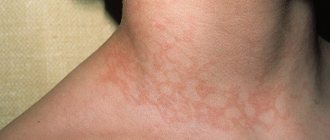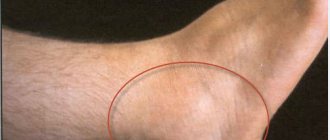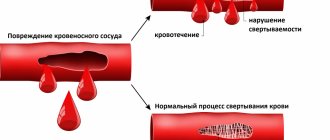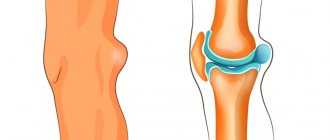For people far from medicine, the phrase hypertension code according to ICD-10 does not mean anything. Even if the person himself suffers from this terrible disease. Many people understand that we are talking about high blood pressure, but what does the code with the strange abbreviation ICD have to do with it and why is it with the number 10 remains a mystery to them.
Everything is quite simple - each disease has its own code in a special disease classifier. There are several codes in this list for various manifestations of hypertension, and the incomprehensible ICD is a simple and understandable thing.
ICD disease codes
Despite the differences in the provision of medical services in different countries, there is a unified international classification of diseases.
It contains an impressive list of various diseases, accepted internationally. The World Health Organization has been working on the creation of such classifiers for many years. The full name of this document (ICD) is more detailed - “International Statistical Classification of Diseases and Related Health Problems.” All diseases are divided into 21 classes depending on body systems, groups of diseases and human conditions. Each class has its own letter and numeric meanings corresponding to a specific disease. One code contains 1 letter and 2 numbers indicating the disease, and the third number is only a clarifying diagnosis.
WHO began to oversee the medical classification of diseases in 1948 after the 6th revision. The ICD is now in its tenth revision, which is why it is designated 10. This version of the classification emerged as a result of long-term international cooperation through the search for compromises that are convenient for everyone. The consent of the parties is necessary to achieve the goals of the ICD.
Purposes of disease classification
At the moment, the unified classifier of diseases and health problems has only two goals - collecting statistics and facilitating work with data. The ICD provides uniform methodological approaches to statistical data on diseases and makes it possible to compare international data.
Thanks to this normative document, conditions began to appear all over the world for a comparative analysis of statistical data on diseases and mortality occurring at different times in many countries. The appearance of codes has significantly simplified this task; now there is no need to write the full name of the disease, but rather indicate the corresponding code.
The international classifier allows us to determine the epidemiological situation, the prevalence of certain diseases, including the frequency of sharply “younger” hypertension.
Arterial hypertension code according to ICD-10 describes more than one common disease; the code may differ due to the concept of target organs damaged by this disease.
Target organs in hypertension
Arterial hypertension is a very common cardiovascular disease and the frequency of its manifestations increases with age. In some countries and regions, the percentage of the elderly population reaches 65, and the percentage of young people is about 20.
Despite the fact that the frequency increases with age, the ICD code for hypertension does not change for young and elderly people. This applies to all types of disease - hypertension can disable various organs, and each type has its own code.
The following organs are often affected by hypertension:
- Eyes;
- Kidneys;
- Heart;
- Brain.
In each of the organs, under the influence of high pressure, many processes can occur - all this is related to the work of the vessels that are primarily exposed to the negative effects of hypertension.
In addition to damage to one organ, there are also various combinations. Often, as a result of increased pressure, the kidneys and heart are simultaneously damaged along with the blood vessels. Therefore, according to ICD-10, hypertension with a combination of damage to two organs occupies 4 codes at once.
Degrees of arterial hypertension
In modern cardiology, several classifications of arterial hypertension are used.
Classification by origin
Arterial hypertension can be an independent disease (hypertension). Or act as a sign of diseases of other organs, systems - endocrine glands (thyroid, adrenal glands), kidneys, heart, blood vessels. And also be the result of taking certain medications. In this case, we will talk about symptomatic (or secondary arterial hypertension).
The classification of hypertension according to blood pressure level, adopted by WHO, distinguishes three degrees of arterial hypertension:
1st degree (soft) - 140-159/90-99; 2nd degree (average) - 160-179/100-109; 3rd degree (severe) - 180/110 and above;
Isolated systolic hypertension is distinguished separately - SBP is above 180, DBP is below 90.
According to the degree of target organ damage, three stages of arterial hypertension are distinguished:
- at the first stage of arterial hypertension, an increase in blood pressure is not accompanied by changes in target organs;
- at the second stage, there is a persistent increase in blood pressure and organic changes in internal organs (however, without significant impairment of their functions). At this stage of the development of hypertension, signs of atherosclerotic damage to large vessels, narrowing of the retinal arteries, hypertrophy of the left ventricle of the heart may be detected; there is an increase in the level of creatinine in the blood and protein in the urine;
- at the third stage of arterial hypertension, a significant increase in blood pressure is associated with pathological changes in target organs and severe impairment of their functions (myocardial infarction, acute cerebrovascular accident, retinal hemorrhages, etc.).
1 Ultrasound of the heart for hypertension
2 ECG for hypertension
3 Diagnosis of hypertension at MedicCity
The place of hypertension in the international classification of the disease
According to WHO, hypertension is in class IX, which includes diseases of the circulatory system. Hypertension code ICD-10, depending on the type, is designated by a code from I10 to I15, not including I14. With the exception of I10, each code has a qualifying third digit for a specific diagnosis.
Although it is not entirely correct to talk about specifics, there are also unspecified types of arterial hypertension. Most often this is hypertension with predominantly simultaneous damage to the kidneys and heart. There is also a secondary unspecified hypertensive disease.
As a rule, after a while the diagnosis is clarified - this is achieved through laboratory tests and analysis of new symptoms that have appeared. After specifying the type of disease, its code changes.
Signs of arterial hypertension
Often, hypertension has no symptoms at all other than persistent high blood pressure. At the same time, not every person constantly monitors their blood pressure levels, so arterial hypertension is often detected very late.
Contact your cardiologist immediately if you regularly notice signs of hypertension such as:
- headaches in the occipital region;
- dizziness;
- “flies”, a veil before the eyes;
- noise in ears;
- rapid and increased heartbeat;
- unpleasant tightness or pain in the chest;
- swelling of the arms and legs, puffiness of the face.
Hypertensive crisis is an emergency condition caused by an excessively high level of blood pressure (for example, up to 200/110 mm Hg and above), it is characterized by: headache, tremor, increased heart rate, chills, nausea, vomiting, sudden fear of death, anxiety , facial redness, swelling, sweating, vision distortion.
1 Ophthalmoscopy in the diagnosis of hypertension
2 Ophthalmoscopy for hypertension
3 Taking tests to diagnose hypertension
ICD-10 codes for different types of hypertension
Hypertension code ICD-10, designated I11, including I11.0 and I11.9, denotes diseases with predominant damage to the heart. This subgroup does not include combinations of heart and kidney damage; they belong to codes I13 and have 4 internal codes - I13.0, I13.1, I13.2 and I13.9
Codes I12 are for hypertension with renal involvement. The international classification distinguishes hypertension with the development of renal failure against the background of high blood pressure (I12.0). Code I12.9 indicates hypertension with kidney damage without the development of insufficiency of their functions.
The alphanumeric designations I15.0, I15.1, I15.2, I15.8, I15.9 hide various variations of secondary hypertensive disease. For primary hypertension, code I10 is assigned. Hypertensive crises are usually noted this way.
Publications in the media
Arterial hypertension (AH, systemic hypertension) is a condition in which systolic blood pressure exceeds 140 mm Hg. and/or diastolic blood pressure exceeds 90 mmHg. (as a result of at least three measurements made at different times against the background of a calm environment; the patient should not take drugs that either increase or decrease blood pressure) • If the causes of hypertension can be identified, then it is considered secondary (symptomatic) • In the absence obvious cause of hypertension, it is called primary, essential, idiopathic, and in our country - hypertension • Isolated systolic hypertension is diagnosed when systolic blood pressure increases more than 140 mm Hg. and diastolic blood pressure less than 90 mm Hg • Hypertension is considered malignant when diastolic blood pressure is more than 120 mm Hg.
Statistics • 20–30% of the adult population suffers from hypertension. The prevalence increases with age and reaches 50–65% in people over 65 years of age, and in the elderly, isolated systolic hypertension is more common, which occurs in less than 5% of the population under the age of 50 years. Before the age of 50, hypertension is more common in men, and after 50 years - in women. Among all forms of hypertension, mild and moderate account for about 70–80%, in other cases severe hypertension is observed • Secondary hypertension accounts for 5–10% of all cases of hypertension, the remaining cases are essential hypertension (hypertension). However, according to specialized clinics, using complex and expensive research methods, secondary hypertension can be detected in 30–35% of patients.
Etiology and pathogenesis • The etiology of hypertension is currently far from completely clear; genetic abnormalities have been identified (see Genetic aspects below). Etiology of secondary hypertension - see Symptomatic arterial hypertension • The main factors determining the level of blood pressure are cardiac output and peripheral vascular resistance. An increase in cardiac output and/or peripheral vascular resistance leads to an increase in blood pressure and vice versa • In the development of hypertension, both internal humoral and neurogenic (renin-angiotensin system, sympathetic nervous system, baro- and chemoreceptors) and external factors (excessive consumption of table salt, alcohol, smoking, obesity) •• Prevalence of vasopressor factors - renin, angiotensin II, vasopressin, endothelin •• Vasodepressor factors - natriuretic peptides, kallikrein-kinin system, adrenomedullin, nitric oxide, Pg (PgI2, prostacyclin).
Genetic aspects. There are many known genetic abnormalities that contribute to the development of hypertension: mutations: angiotensin gene, aldosterone synthetase, b-subunit of amiloride-sensitive sodium channels of the renal epithelium, as well as a lot of loci of the so-called predisposition to the development of hypertension.
Risk factors • Complicated family history •• Lipid metabolism disorders in the patient and his parents •• Diabetes in the patient and his parents •• Kidney disease in parents (polycystic disease) • Obesity • Alcohol abuse • Excessive consumption of table salt • Stress • Physical inactivity • Smoking • Patient's personality type.
At-risk groups. Due to the involvement of various organs and systems in the pathological process, their influence on the course of the disease, groups of patients with high and very high risk are distinguished • The high-risk group includes patients with three or more risk factors, patients with target organ damage or patients with diabetes • The very high-risk group includes patients with concomitant diseases and risk factors.
Classification. Currently, two classifications are common in Russia - WHO and the International Society of Hypertension (1999) and WHO (1978).
Classification of hypertension by WHO and International Society of Hypertension (1999) • Optimal •• Systolic blood pressure: <120 mm Hg •• Diastolic blood pressure <80 mm Hg • Normal •• Systolic blood pressure <130 mm Hg •• Diastolic blood pressure < 85 mm Hg • High normal: •• Systolic blood pressure 130–139 mm Hg •• Diastolic blood pressure 85–89 mm Hg • Grade I (mild) •• Systolic blood pressure 140–159 mm Hg •• Diastolic blood pressure 90–99 mm Hg • subgroup: borderline •• Systolic blood pressure 140–149 mm Hg •• Diastolic blood pressure 90–94 mm Hg • Grade II (moderate) •• Systolic blood pressure 160–179 mm Hg .st •• Diastolic blood pressure 100–109 mm Hg • III degree (severe) •• Systolic blood pressure >180 mm Hg •• Diastolic blood pressure >110 mm Hg • Isolated systolic •• Systolic blood pressure >140 mm Hg .st •• Diastolic blood pressure <90 mm Hg • subgroup: borderline •• Systolic blood pressure 140–149 mm Hg •• Diastolic blood pressure <90 mm Hg • Note. When determining the degree, the highest blood pressure value should be used, for example 140/100 mmHg. — II degree of hypertension.
WHO classification of hypertension (1978) • Stage I - increased blood pressure more than 160/95 mm Hg. without organic changes in the cardiovascular system • stage II - high blood pressure •• with hypertrophy of the left ventricle of the heart •• either with proteinuria and/or a slight increase in the concentration of creatinine in the blood plasma (not more than 176.8 µmol/l) •• or with widespread or localized ( retina) changes in arteries • Stage III - high blood pressure with damage to the heart, brain, retina, kidneys (myocardial infarction, heart failure, cerebrovascular accident, retinal hemorrhage, renal failure).
Blood pressure measurement
• Measurement must be carried out after resting for 5 minutes. 30 minutes before this, it is not recommended to eat, drink coffee, drink alcohol, exercise, or smoke. When measuring, your legs should not be crossed, your feet should be on the floor, your back should rest on the back of the chair. A hand rest is required, and the bladder must be emptied before measurement. Failure to comply with these conditions can lead to an increase in blood pressure: after drinking coffee - by 11/5 mm Hg, alcohol - by 8/8 mm Hg, smoking - by 6/5 mm Hg, with a full urinary bladder - 15/10 mm Hg, in the absence of support for the back - systolic by 6–10 mm Hg, in the absence of support for the arm - by 7/11 mm Hg.
• The shoulder should be at the level of the IV–V intercostal space (a low elbow position increases systolic blood pressure by an average of 6 mm Hg, a high elbow position underestimates blood pressure by 5/5 mm Hg). The shoulder should not be compressed by clothing (measurement through clothing is unacceptable) - systolic pressure may be overestimated by 5–50 mmHg. The lower edge of the cuff should be 2 cm above the elbow (improper application of the cuff can lead to an overestimation of blood pressure by 4/3 mmHg), and it should fit snugly to the upper arm. The air in the cuff should be inflated to 30 mm Hg. above the disappearance of the pulse on the radial artery. The stethoscope should be placed in the cubital fossa. The moment the first sounds appear will correspond to phase I of Korotkoff sounds and shows systolic blood pressure. The rate of decrease in pressure in the cuff is 2 mm/s (slow decompression increases blood pressure by 2/6 mm Hg, fast decompression increases diastolic blood pressure). The moment of disappearance of the last sounds will correspond to the V phase of Korotkoff sounds and corresponds to diastolic blood pressure.
• Measured parameters should be indicated with an accuracy of 2 mmHg. When measuring, it is necessary to listen to the area of the cubital fossa until the pressure in the cuff decreases to zero (you should remember about possible aortic valve insufficiency and other pathological conditions with high pulse pressure, large stroke volume of the heart). During each examination of the patient, blood pressure is measured at least twice on the same arm and the average values are recorded. During the first examination, the pressure is measured on both arms, and subsequently on the arm where it was higher. The difference in blood pressure between the left and right arms should not exceed 5 mmHg. More significant differences should be alarming regarding vascular pathology of the upper extremities.
• When measuring blood pressure with the patient lying down, his arm should be slightly elevated (but not suspended) and be at the level of the middle of the chest.
• Repeated measurements should be carried out under the same conditions. It is necessary to measure blood pressure in a patient in two positions - lying and sitting - in the elderly, with diabetes, in patients taking peripheral vasodilators (to identify possible orthostatic arterial hypotension).
Clinical manifestations are nonspecific and depend on target organ damage.
• Cerebral symptoms •• The main symptom is headache, often on awakening and usually in the occipital region •• Dizziness, blurred vision, transient cerebrovascular accident or stroke, retinal hemorrhages or papilledema, movement disorders and sensory disorders • Intellectual-mnestic disorders.
• Cardiac symptoms •• Palpitations, pain in the heart area, shortness of breath (due to pronounced changes in the heart with hypertension, every second patient has cardiac symptoms) •• Clinical manifestations of coronary artery disease •• Left ventricular dysfunction or heart failure.
• Kidney damage: thirst, polyuria, oliguria, nocturia, microhematuria.
• Peripheral arterial disease: cold extremities, intermittent claudication.
• Hypertension is often asymptomatic.
• It is possible to detect (by palpation) volumetric formations in the kidney area, as well as listen to a systolic murmur over the kidney area.
• Examination - signs of some endocrine diseases accompanied by hypertension: hypothyroidism, thyrotoxicosis, Itsenko-Cushing syndrome, pheochromocytoma, acromegaly.
• Palpation of peripheral arteries, auscultation of vessels, heart, chest, abdomen suggest vascular damage as the cause of hypertension, suspect aortic disease, suggest renovascular hypertension.
Features of collecting anamnesis • Family history of hypertension, diabetes, lipid metabolism disorders, coronary heart disease, stroke, kidney disease • Duration of hypertension and its evolution, previous blood pressure level, results and side effects of previous antihypertensive treatment • Presence and course of coronary artery disease, heart failure, stroke, other diseases in this patient (gout, bronchospastic conditions, dyslipidemia, sexual dysfunction, kidney disease) • Clarification of symptoms of presumably secondary hypertension • Detailed questioning about taking medications that increase blood pressure (GCs, oral contraceptives, NSAIDs, amphetamines, epoetin beta, cyclosporine) • Lifestyle assessment (consumption of table salt, fat, alcohol, smoking, physical activity) • Personal, psychosocial and external factors influencing blood pressure (family, work).
Laboratory and special research methods. It is necessary to exclude symptomatic hypertension, identify risk factors and the degree of target organ involvement.
• OAC (anemia, erythrocytosis, leukocytosis, increased ESR - secondary hypertension).
• OAM - leukocyturia, erythrocyturia, proteinuria, cylindruria (symptomatic hypertension), glucosuria (DM).
• Biochemical tests to determine the concentration of potassium ions, creatinine, glucose, cholesterol (secondary hypertension, risk factors). It should be remembered that a rapid decrease in blood pressure with long-term hypertension of any etiology can lead to an increase in creatinine levels in the blood.
• ECG - left ventricular hypertrophy, rhythm and conduction disturbances, electrolyte disturbances, signs of ischemic heart disease (changes in the terminal part of the ventricular complex, scar changes).
• EchoCG to detect left ventricular hypertrophy, assess myocardial contractility, and identify valvular defects as a cause of hypertension.
• Ultrasound of the kidneys, adrenal glands, renal arteries, peripheral vessels to identify secondary hypertension.
• Fundus examination: hypertensive retinopathy - narrowing and sclerosis of the arteries (symptoms of copper or silver wire), Salus phenomenon.
Diagnostic tactics. The diagnosis of hypertension (essential, primary hypertension) is established only by excluding secondary hypertension. Goals of diagnostic measures for hypertension • Determination of a possible cause • Identification of concomitant diseases • Identification of risk factors for coronary artery disease. Since hypertension itself is one of the risk factors for CHD, the presence of another risk factor further increases the likelihood of developing CHD; in addition, the prescribed treatment can seriously affect risk factors - for example, diuretics and non-selective beta-blockers in the presence of dyslipidemia and insulin resistance can aggravate these disorders • Identification of target organ involvement in the hypertensive process. Their defeat has the most serious impact on the prognosis of the disease and approaches to its treatment.
Differential diagnosis • Renoparenchymal hypertension - see Arterial hypertension, renoparenchymal • Vasorenal hypertension - see Arterial vasorenal hypertension • Endocrine hypertension constitutes approximately 0.1–1% of all hypertension (up to 12% according to specialized clinics) •• With pheochromocytoma (see Pheochromocytoma ) •• With primary hyperaldosteronism (see Hyperaldosteronism) •• With hypothyroidism - high diastolic blood pressure; other manifestations of the cardiovascular system - decreased heart rate and cardiac output •• In hyperthyroidism - increased heart rate and cardiac output, predominantly isolated systolic hypertension with low (normal) diastolic blood pressure; an increase in diastolic blood pressure in hyperthyroidism is a sign of another disease accompanied by hypertension or a sign of hypertension • Drug hypertension - vasoconstriction due to sympathetic stimulation or direct effects on vascular SMCs, increased blood viscosity, stimulation of the renin-angiotensin system, ion retention may be important in the pathogenesis sodium and water, interaction with central regulatory mechanisms - for more details, see Symptomatic Arterial Hypertension.
TREATMENT
The goal is to reduce cardiovascular morbidity and mortality by normalizing blood pressure, protecting target organs, eliminating risk factors (smoking cessation, compensation for diabetes, reducing the concentration of cholesterol in the blood and excess body weight).
• Recommendations of WHO and IAH (International Society of Arterial Hypertension; 1999) •• In young and middle-aged people, as well as in patients with diabetes, it is necessary to maintain blood pressure at the level of 130/85 mm Hg •• In elderly people, the target blood pressure level is £140 /90 mmHg
• Excessive rapid decrease in blood pressure with significant duration and severity of the disease can lead to hypoperfusion of vital organs - the brain (hypoxia, stroke), heart (exacerbation of angina, myocardial infarction), kidneys (renal failure).
Treatment plan • Control of blood pressure and risk factors • Lifestyle changes • Drug therapy.
Non-drug treatment is indicated for all patients. In 40–60% of patients with the initial stage of hypertension with low blood pressure values, it is normalized without the use of drugs. In case of severe hypertension, non-drug therapy in combination with medication helps to reduce the dose of drugs taken and thereby reduces the risk of their side effects. The mechanisms leading to a decrease in blood pressure are considered to be a decrease in cardiac output, a decrease in peripheral vascular resistance, or a combination of both mechanisms.
• Diet •• Limiting table salt intake to less than 6 g/day (but not less than 1–2 g/day, since in this case compensatory activation of the renin-angiotensin system may occur) •• Limiting carbohydrates and fats, which is very important in the prevention of coronary heart disease , the likelihood of which is increased in hypertension (risk factor). A decrease in excess body weight by 1 kg leads to a decrease in blood pressure by an average of 2 mm Hg •• An increase in the content of potassium and calcium ions in the diet •• Refusal or significant limitation of alcohol intake (especially if it is abused).
• Physical activity - sufficient cyclic activity (walking, light jogging, skiing) in the absence of contraindications from the heart (coronary artery disease), blood vessels of the legs (atherosclerosis obliterans), central nervous system (cerebrovascular accidents) reduces blood pressure, and at low levels it can normalize his. Moderation and gradual dosing of physical activity is recommended. Physical activity with a high level of emotional stress (competition, gymnastics), as well as isometric efforts (weight lifting) are undesirable.
• Other methods - psychological (psychotherapy, autogenic training, relaxation), acupuncture, massage, physiotherapeutic methods (electrosleep, diadynamic currents, hyperbaric oxygenation), water procedures (swimming, shower, including contrast), herbal medicine (chokeberry, tincture of hawthorn, motherwort, mixtures with marsh cudweed, hawthorn, immortelle, sweet clover).
Drug therapy
Basic principles: • It is necessary to begin treatment of mild hypertension with small doses of drugs • Combinations of drugs should be used to increase their effectiveness and reduce side effects • It is preferable to use long-acting drugs (12–24 hours with a single dose).
• b-blockers •• Preference should be given to b-blockers when hypertension is combined with coronary artery disease (angina pectoris and unstable angina, post-infarction cardiosclerosis, heart failure), tachyarrhythmias, extrasystoles •• After abrupt withdrawal of b-blockers, withdrawal syndrome may develop, manifested by tachycardia, arrhythmias, increased blood pressure, exacerbation of angina, development of myocardial infarction, and in some cases even sudden cardiac death. To prevent withdrawal syndrome, a gradual reduction in the dose of the b-blocker is recommended for at least 2 weeks. There is a high-risk group for the development of withdrawal syndrome - these are people with hypertension in combination with angina pectoris, as well as with ventricular arrhythmias •• Drugs ••• Non-selective (blockade of b1- and b2-adrenergic receptors): propranolol 40–240 mg/day at 3 doses, pindolol 5–15 mg 2 times/day, timolol 10–40 mg/day in 2 divided doses ••• Selective (cardioselective) b1-blockers: atenolol 25–100 mg 2 times/day, metoprolol 50–200 mg/day in 2 doses, nadolol 40–240 mg/day, betaxolol 10–20 mg/day.
• Diuretics •• Varieties ••• Thiazides and thiazide-like diuretics (used most often in the treatment of hypertension) are diuretics of moderate potency, suppress the reabsorption of 5–10% of sodium ions (drugs: hydrochlorothiazide 12.5–50 mg/day, cyclopenthiazide 0, 5 mg/day, chlorthalidone 12.5–50 mg/day) ••• Loop diuretics (characterized by the rapid onset of action when administered parenterally) are strong diuretics, suppress the reabsorption of 15–25% of sodium ions (the main drug is indapamide 2.5 mg /day in one dose; furosemide at a dose of 20–320 mg/day is rarely prescribed for continuous use for antihypertensive purposes) ••• Potassium-sparing diuretics are weak diuretics, cause additional excretion of no more than 5% of sodium ions (drugs: spironolactone 25–100 mg / day, triamterene 50–100 mg 4 times / day.) •• Preference for diuretics in the treatment of hypertension is given if there is a tendency to edema and in old age.
• ACE inhibitors •• Preferred for the treatment of hypertension with the following concomitant conditions (diseases): ••• left ventricular hypertrophy (ACE inhibitors are most effective in its regression) ••• hyperglycemia ••• hyperuricemia ••• hyperlipidemia (ACE inhibitors do not aggravate these conditions) ••• history of myocardial infarction ••• heart failure (ACE inhibitors are among the most effective drugs for the treatment of heart failure; they not only weaken its clinical manifestations, but also increase the life expectancy of patients) ••• older age •• Drugs ••• captopril 25–150 mg/day ••• enalapril 2.5–40 mg/day ••• fosinopril 10–60 mg/day ••• lisinopril 2.5–40 mg/day ••• ramipril 2, 5–10 mg/day ••• benazepril 10–20 mg/day.
• Slow calcium channel blockers •• Preferred in the treatment of hypertension in combination with angina (especially vasospastic), dyslipidemia, hyperglycemia, broncho-obstructive diseases, hyperuricemia, supraventricular arrhythmias (verapamil, diltiazem), left ventricular diastolic dysfunction, Raynaud's syndrome •• With bradycardia or predisposition to it, a decrease in myocardial contractility, conduction disturbances, verapamil or diltiazem, which have pronounced negative inotropic, chronotropic and dromotropic effects, should not be prescribed, and, conversely, the use of dihydropyridine derivatives is indicated •• Due to the different sensitivity of patients to slow calcium channel blockers, treatment begins with small doses •• Drugs ••• Diltiazem 120–360 mg/day ••• Isradipine 2.5–15 mg/day ••• Nifedipine (extended dosage form) 30–120 mg/day ••• Nitrendipine 5–40 mg /day ••• Verapamil 120–480 mg/day ••• Amlodipine 2.5–10 mg/day ••• Felodipine 2.5–10 mg/day.
• Angiotensin II receptor blockers •• These drugs are preferable when a dry cough appears during treatment with ACE inhibitors, renal failure (especially in diabetes mellitus) •• Drugs ••• losartan 25–100 mg in 1 or 2 doses ••• valsartan 80 mg 1 time / day ••• eprosartan 600 mg 1 time / day ••• candesartan.
• a-blockers •• For long-term treatment of hypertension, selective a1-blockers are mainly used (prazosin 1–20 mg/day, doxazosin 1–16 mg/day, terazosin) •• This group of drugs is widely used in urology in the treatment of benign hyperplasia prostate gland •• Despite many positive effects, drugs in this group are rarely used as monotherapy. Apparently, this is due to disadvantages and side effects, although the danger of most of them is most likely exaggerated. The main indications are combination therapy •• Disadvantages: “first dose phenomenon” (pronounced decrease in blood pressure after the first dose), orthostatic arterial hypotension, long-term selection of the drug dose, development of tolerance (effect evasion), withdrawal syndrome. To prevent the “first dose phenomenon”, it is recommended to take an a-blocker in bed, followed by staying in a lying position for several hours (it is better to take it at night).
• Centrally acting drugs (in recent years they have gradually lost their importance) •• Centrally acting drugs cause a decrease in blood pressure due to inhibition of the deposition of catecholamines in central and peripheral neurons (reserpine), stimulation of central a2-adrenergic receptors (clonidine, guanfacine, methyldopa, moxonidine) and I1 -imidazoline receptors (clonidine and especially the specific agonist moxonidine), which ultimately weakens the sympathetic influence and leads to a decrease in peripheral vascular resistance, a decrease in heart rate and cardiac output •• Drugs in this group are mainly used orally for the treatment of hypertension. Preference should be given to imidazoline receptor agonists as first-line agents for diabetes and hyperlipidemia (they do not aggravate metabolic disorders), COPD (the drugs do not affect bronchial patency), severe hypersympathicotonia, left ventricular hypertrophy (they cause its regression). Methyldopa is most often used in the treatment of hypertension in pregnant women •• Drugs: reserpine and combination drugs containing it (reserpine + dihydralazine + hydrochlorothiazide, reserpine + dihydroergocristine + clopamide), methyldopa up to 2 g / day (when combined with other antihypertensive drugs, no more than 500 mg /day), clonidine at an initial dose of 0.075 3 times / day in 2 divided doses, moxonidine up to 0.4 mg / day in 2 divided doses, guanfacine 1-3 mg / day.
Combination therapy. According to international multicenter studies, the need for combination therapy occurs in 54–70% of patients. Indications for combination therapy are as follows: • Ineffectiveness of monotherapy. Monotherapy with an antihypertensive drug is effective on average in 50% of patients with hypertension (a higher result can be achieved, but then the risk of side effects will increase). To treat the remaining part of the patients, it is necessary to use a combination of two or more antihypertensive drugs • The need for additional protection of target organs, primarily the heart and brain.
Rational combinations of drugs. The most common combination of a diuretic and some other class of drug is used. In some countries, combination therapy with a diuretic is considered a mandatory step in the treatment of hypertension • The most effective combination is a combination of a diuretic and an ACE inhibitor (possibly a fixed combination, for example, capozide, Korenitek) • The combination of a diuretic and an angiotensin II receptor blocker is rational • Approximately the same additive effect has a combination of a diuretic and a beta-blocker (this combination is not the most successful, since both the diuretic and the beta-blocker affect the metabolism of glucose and lipids).
Irrational combinations of antihypertensive drugs can lead to both increased side effects and an increase in the cost of treatment if there is no effect. A striking example of an irrational combination is the combination of beta-blockers and slow calcium channel blockers (verapamil, diltiazem), since both groups of drugs worsen both myocardial contractility and AV conduction (increased side effects), while the combination of beta-blockers with dihydropyridines (for example, nifedipine) is positive.
Treatment of certain types of hypertension
• Resistant (refractory) hypertension - the inability to achieve a reduction in blood pressure to target values (less than 140/90 mm Hg) for more than 1 month in patients with hypertension during combination therapy with two or three antihypertensive drugs in sufficient dosages •• To confirm the diagnosis, it is necessary to test all rational combinations of drugs (primarily including diuretics, the combination “ACE inhibitor + slow calcium channel blocker” is also effective), then prescribe a triple combination in a variety of options, then a combination of four drugs (usually minoxidil is used as one of the components) • • One should remember about possible pseudo-resistance, the cause of which may be symptomatic hypertension, non-compliance with the rules of taking medications, inappropriate dosage, irrational combination of drugs, taking alcohol and drugs that increase blood pressure, weight gain, increased blood volume (for example, in heart failure), deliberate administration the patient misleads the doctor (simulation) •• In each case of resistant hypertension, a thorough examination of the patient is necessary, preferably in a specialized hospital to exclude symptomatic hypertension.
• Hypertension in the elderly •• Treatment should begin with non-drug measures, which in this case quite often reduce blood pressure to the target level. Of great importance is limiting the consumption of table salt and increasing the content of potassium and magnesium salts in the diet •• Drug treatment is based on the pathogenetic features of hypertension at a given age. In addition, it should be remembered that various concomitant diseases often occur in the elderly ••• It is necessary to start treatment with smaller doses (often half the standard) ••• The dose should be increased gradually over several weeks ••• The dose is selected under constant monitoring of blood pressure, and it is better to measure it in a standing position to identify possible orthostatic arterial hypotension ••• It is advisable to use a simple treatment regimen (1 tablet - 1 time / day) ••• You should use medications with caution that can cause orthostatic arterial hypotension (methyldopa, prazosin, labetalol) , and centrally acting drugs (clonidine, methyldopa, reserpine), the use of which in old age is quite often complicated by depression or pseudodementia. When treating with diuretics and/or ACE inhibitors, it is advisable to monitor renal function and blood electrolyte composition.
• Endocrine hypertension - see Symptomatic arterial hypertension.
• “Alcoholic” hypertension - see Symptomatic arterial hypertension.
Complications of hypertension: • MI • acute cerebrovascular accident • heart failure • renal failure • hypertensive encephalopathy • hypertensive retinopathy • hypertensive crisis • dissecting aortic aneurysm.
The prognosis significantly depends on the adequacy of the prescribed therapy and the patient’s compliance with medical recommendations.
Reduction. AH - arterial hypertension.
ICD-10 • I10 Essential (primary) hypertension • I11 Hypertensive heart disease [hypertensive disease with predominant damage to the heart] • I12 Hypertensive [hypertensive] disease with predominant damage to the kidneys • I13 Hypertensive [hypertensive] disease with predominant damage to the heart and kidneys • I15 Secondary hypertension • O10 Pre-existing hypertension complicating pregnancy, childbirth and the puerperium • O11 Pre-existing hypertension with associated proteinuria
Hypertensive crisis according to ICD
According to the ICD-10 code, a hypertensive crisis refers to essential hypertension, although a sharp rise in pressure, life-threatening, can also occur with secondary manifestations of the disease. Code I10 is sometimes changed to other codes for hypertensive diseases after the diagnosis has been clarified. Quite often this occurs with hypertension, which affects both the heart and kidneys.
In Russia there is still no legally established classification of hypertensive crises. In the USA and a number of other countries, crises in hypertensive patients are divided into two types:
- Complicated;
- Uncomplicated.
The first of them requires urgent hospitalization, regardless of the ICD-10 code. The second is treated at home followed by treatment in a hospital. And this data can also be subjected to statistical processing.
Application of statistical data on ICD codes
Many countries have their own statistical centers that process various data. Thanks to the availability of disease classifications, it is possible to determine the prevalence of a particular disease in a certain region or an entire country. This allows you to quickly collect all the data about any disease - hypertension according to ICD-10 occupies several different codes, and not 20-25 definitions with the names of specified diseases.
The analyzed data allows ministries of different countries to respond correctly to the outbreak of a specific disease.
Additional surveys are being created to identify the epidemiological disease in the initial stages, and work is being carried out with the population and medical workers. Also, based on such analysis, information brochures and various materials are created on preventive measures for a specific disease.
Prevention of hypertension
Hypertensive disease occupies several ICD-10 codes at once. There are several types of hypertension, including those that can damage different organs. Codes for hypertension were determined by the World Health Organization and later data on them will be processed in statistical centers. In order not to become another unit in statistics, it is advisable to take preventive measures in advance, especially if there is a hereditary predisposition.
Proper nutrition with sufficient minerals and vitamins, normal physical activity, optimal weight and moderate salt intake can greatly help avoid hypertension. If you exclude excessive stress, alcohol abuse and smoking, then the likelihood of hypertension will become even less. And then there will be no need to worry about what ICD-10 code for hypertension will be.
Reasons for the development of arterial hypertension
The exact cause of the development of hypertension has not yet been established, however, a clear relationship has been identified between hypertension and the following factors:
- Exposure to stress;
- hereditary predisposition;
- age;
- gender (AH is more common in men);
- abuse of table salt;
- smoking and alcohol;
- endocrine disorders;
- excess body weight;
- physical inactivity;
- kidney diseases;
- increased adrenaline levels;
